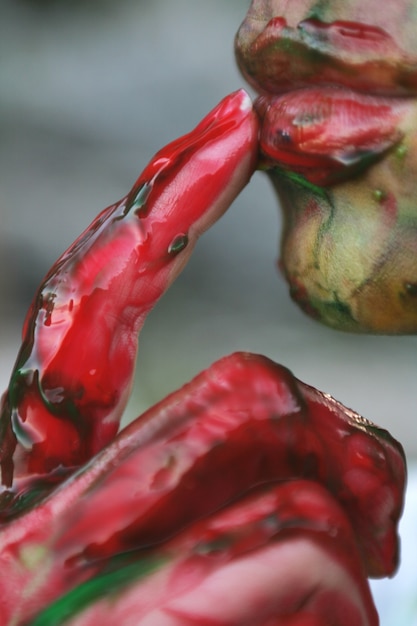
Kidney stones, also called renal calculi or nephrolithiasis, are solid deposits of minerals that accumulate in your urinary tract and form in your kidneys. Some kidney stones remain small and don’t cause symptoms, while others grow larger and can lead to pain, nausea, and blood in your urine.
How kidney stones are treated often depends on their size and symptoms. You might take over-the-counter pain medication and wait for the stone to pass, or a healthcare provider might need to perform a procedure to remove or break it up. Additionally, your provider might suggest ways to prevent future stones.
Around 10.1% of people in the U.S. experience kidney stones at least once in their lives. Understanding what symptoms to watch for, knowing when to seek help, and learning about treatment options is essential.
Healthcare providers categorize kidney stones by the minerals and compounds they consist of.
The most common sign of a kidney stone is pain, which tends to be more intense with larger stones. These painful episodes often last from 20 minutes to an hour and can come and go. Pain is typically felt in the back, stomach, sides, and pelvic area. Thankfully, once the stones pass, the pain usually subsides.
Other symptoms of kidney stones include vomiting, blood in the urine, and frequent or painful urination.
Kidney stones can develop due to various factors, including diet and family history.
If you suspect you have a kidney stone, it’s best to see a healthcare provider promptly to manage pain and prevent complications. They will likely conduct a physical exam, review your medical history, and possibly order additional tests, like a CT scan.
Sometimes a provider can identify the type of stone by its appearance on a CT scan and through stone analysis. For instance, calcium stones may look denser than those made from cystine or magnesium ammonium phosphate.
Healthcare providers may recommend medical procedures and supportive care to alleviate symptoms and remove kidney stones. A urologist, who specializes in the urinary tract, often collaborates with your primary care provider for stone removal. Possible procedures include shock wave therapy or surgical removal.
Preventive measures are especially crucial if you have a family history of kidney stones. Common prevention strategies involve drinking plenty of water and adjusting your diet. If you’ve had kidney stones before, your provider might prescribe medication or supplements to lower the risk of future stones; it’s important to take these as instructed.
Although serious complications are rare, kidney stones can lead to blockages that prevent urine from leaving the kidneys. This can result in infection or even sepsis, a severe and potentially life-threatening condition.
In rare instances, about 2% to 3% of people with kidney stones might experience end-stage kidney failure. To minimize these risks, timely medical care is critical.
Kidney stones are a frequent cause for more than half a million emergency room visits in the U.S. annually. Because these stones often recur, working with a healthcare provider to analyze them can help you make necessary dietary and lifestyle changes, reducing the risk of future stones. By staying hydrated and following your provider’s treatment plan, you may pass kidney stones more quickly and decrease the likelihood of developing them again.

